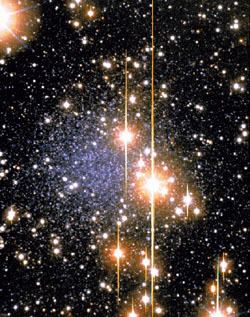Right ascension 23 26 31.0 Redshift -307 ± 2 km/s Apparent size (V) 2′.5 × 2′.0 | Declination +50° 41′ 31″ Type Sph? Magnitude 12.9 Apparent magnitude (V) 12.9 | |
 | ||
Distance 2.58 ± 0.13 Mly (790 ± 40 kpc) Similar Pegasus Dwarf Spheroid, Andromeda VIII, NGC 147, NGC 185, Cetus Dwarf | ||
The Cassiopeia Dwarf (also known as Andromeda VII) is a dwarf spheroidal galaxy about 2.58 Mly away in the constellation Cassiopeia. The Cassiopeia Dwarf is part of the Local Group and a satellite galaxy of the Andromeda Galaxy (M31).
The Cassiopeia Dwarf was found in 1998, together with the Pegasus Dwarf, by a team of astronomers (Karachentsev and Karachentseva) in Russia and Ukraine. The Cassiopeia Dwarf and the Pegasus Dwarf are farther from M31 than its other known companion galaxies, yet still appear bound to it by gravity. Neither galaxy contains any young, massive stars or shows traces of recent star formation. Instead, both seem dominated by very old stars, with ages of up to 10 billion years.
References
Cassiopeia Dwarf Wikipedia(Text) CC BY-SA
